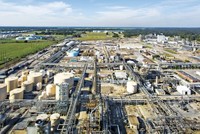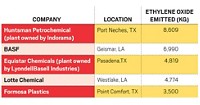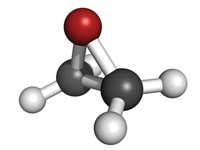Advertisement
Grab your lab coat. Let's get started
Welcome!
Welcome!
Create an account below to get 6 C&EN articles per month, receive newsletters and more - all free.
It seems this is your first time logging in online. Please enter the following information to continue.
As an ACS member you automatically get access to this site. All we need is few more details to create your reading experience.
Not you? Sign in with a different account.
Not you? Sign in with a different account.
ERROR 1
ERROR 1
ERROR 2
ERROR 2
ERROR 2
ERROR 2
ERROR 2
Password and Confirm password must match.
If you have an ACS member number, please enter it here so we can link this account to your membership. (optional)
ERROR 2
ACS values your privacy. By submitting your information, you are gaining access to C&EN and subscribing to our weekly newsletter. We use the information you provide to make your reading experience better, and we will never sell your data to third party members.
Pollution
US EPA requires chemical makers to cut ethylene oxide emissions
Rule targets carcinogenic gas releases from leaks, vents, and storage tanks
by Cheryl Hogue
June 2, 2020
| A version of this story appeared in
Volume 98, Issue 22

Chemical makers must curb ethylene oxide leaks, though not nearly as much as the US Environmental Protection Agency had proposed last year.
Chemical production facilities collectively will have to cut emissions of this carcinogenic gas from storage tanks, vents, and leaky equipment by 0.69 metric tons per year, under a rule the EPA unveiled June 1. This is less than a tenth of the reduction of ethylene oxide releases by manufacturers of miscellaneous organic chemicals that the agency proposed in November.
Ethylene oxide, a basic chemical building block made from natural gas or petroleum, is used to make a raft of products from plastics to medicines and is carcinogenic. The compound is also used to sterilize medical equipment.
In its new regulation, the EPA recognizes that exposure to ethylene oxide emissions from chemical plants threatens the health of people living near those facilities, says Emma Cheuse, an attorney for the legal group Earthjustice. She says the rule leaves some of those people with a cancer risk as high as 200 in 1 million from breathing ethylene oxide. The agency’s rules generally limit increased cancer risk to a level of 100 in 1 million.
The EPA did not take into consideration a recent analysis by the Texas Commission on Environmental Quality (TCEQ) which concluded that ethylene oxide is far less hazardous than the EPA determined in 2016, the federal agency says. That’s because the TCEQ hazard evaluation wasn’t peer reviewed in time for the EPA to consider it, the agency adds. The EPA was under a court-ordered deadline to issue the rule.
But the EPA leaves open the possibility that it could change its ethylene oxide hazards calculations in light of the TCEQ analysis, a move that could lead to less-stringent emission controls on the gas. The EPA has not yet responded to a 2018 request from the American Chemistry Council (ACC), an association of chemical manufacturers, to revise the federal cancer-risk estimates for ethylene oxide. EPA says it will address the ACC request soon.
ACC, which strongly backs the TCEQ stance, says it was disappointed that the EPA relied on the 2016 estimation in the rule.





Join the conversation
Contact the reporter
Submit a Letter to the Editor for publication
Engage with us on Twitter